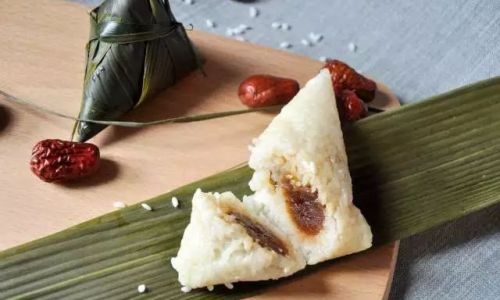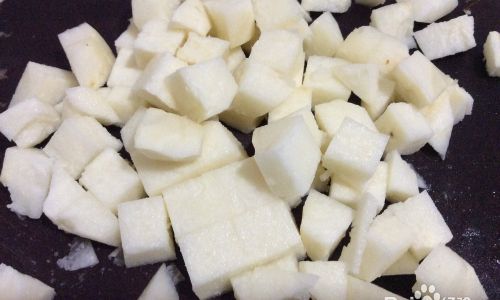Table of content
Zongzi, a traditional Chinese rice dumpling wrapped in bamboo or reed leaves, is a beloved dish enjoyed during festivals like the Dragon Boat Festival and beyond. These sticky rice parcels, often filled with ingredients like red bean paste, pork, or salted egg yolk, require careful preparation to achieve their signature soft texture and harmonious flavors. When stored in the freezer, zongzi becomes a convenient meal option, but cooking them properly from frozen demands attention to time and technique. This article explores the science behind cooking frozen zongzi, factors influencing cooking duration, and expert tips to ensure optimal results every time.
Understanding Zongzi Composition and Freezing
Before diving into cooking times, it’s essential to grasp why zongzi freezes well and how this affects its reheat process. Zongzi is primarily made of glutinous rice, which has a high starch content. When cooked, the starch gelatinizes, creating a sticky, cohesive texture. Freezing slows down microbial growth but does not kill bacteria, so proper reheating is critical for food safety. Additionally, the leaves used to wrap zongzi (typically bamboo, reed, or sometimes banana leaves) act as natural insulators, which can impact heat penetration during cooking.
When frozen, the moisture in the rice and fillings forms ice crystals. These crystals can alter the texture if not thawed or cooked correctly, potentially leading to a dry or unevenly heated dumpling. However, cooking zongzi directly from frozen—without thawing—is often recommended to preserve its structure and prevent bacterial growth.

Factors Influencing Cooking Time
The duration required to cook frozen zongzi varies based on several variables:
- Size and Thickness: Larger zongzi or those with thicker layers of rice and fillings will take longer to cook. For example, a compact, fist-sized dumpling may require 10–15 minutes more than a smaller, slender variety.
- Cooking Method: Boiling, steaming, and pressure cooking yield different results. Boiling is the most common method but may take longer, while pressure cooking speeds up the process.
- Altitude: At higher elevations, water boils at lower temperatures, which can extend cooking times.
- Freezer Storage Duration: Zongzi stored for extended periods may develop more ice crystals, slightly increasing cooking time.
- Filling Density: Meat-filled zongzi, which often contain denser ingredients like pork or mushrooms, may require marginally longer cooking to ensure the filling is heated thoroughly.
Cooking Methods and Recommended Times
Boiling
Boiling is the traditional method for cooking zongzi and ensures even heat distribution. Here’s how to do it:
- Step 1: Fill a large pot with enough water to submerge the zongzi completely. Avoid overcrowding the pot; cook in batches if necessary.
- Step 2: Bring the water to a rolling boil over high heat.
- Step 3: Gently add the frozen zongzi to the pot. Reduce the heat to maintain a gentle simmer (medium-low to medium heat).
- Step 4: Simmer for 30–45 minutes for standard-sized zongzi (about 100–150 grams each). Larger dumplings may require 45–60 minutes.
- Step 5: Test for doneness by carefully unwrapping one zongzi (use tongs to avoid burns). The rice should be soft, sticky, and heated through, with no cold spots in the center.
Pro Tip: Add a pinch of salt to the boiling water to enhance the rice’s flavor and prevent the leaves from sticking.
Steaming
Steaming is a gentler method that preserves the zongzi’s shape and moisture. It’s ideal for preventing the dumplings from becoming waterlogged.
- Step 1: Place a steamer basket in a pot or wok. Add enough water to reach just below the basket.
- Step 2: Arrange the frozen zongzi in the basket, leaving space between them for steam circulation.
- Step 3: Bring the water to a boil, then reduce heat to medium. Cover the steamer.
- Step 4: Steam for 40–50 minutes for regular-sized zongzi. Larger varieties may need 50–70 minutes.
- Step 5: Check doneness by inserting a skewer into the center; it should feel hot and tender.
Pro Tip: Line the steamer basket with parchment paper or cabbage leaves to prevent sticking.
Pressure Cooking
Pressure cooking drastically reduces cooking time, making it a efficient option for busy households.
- Step 1: Place the frozen zongzi in the pressure cooker with 1–2 cups of water (depending on the cooker’s size).
- Step 2: Secure the lid and cook on high pressure.
- Step 3: Set the timer for 15–20 minutes for standard zongzi. Allow natural pressure release for 10 minutes before manually releasing remaining steam.
- Step 4: Unwrap and test for doneness. If the center is still cool, pressure cook for an additional 3–5 minutes.
Pro Tip: Avoid overfilling the pressure cooker to ensure proper heat circulation.

Microwaving
While less common, microwaving is a quick fix for individual servings. However, it may result in uneven heating.
- Step 1: Wrap the frozen zongzi in a damp paper towel to retain moisture.
- Step 2: Place on a microwave-safe plate and cook on high for 3–5 minutes, flipping halfway through.
- Step 3: Let it rest for 1–2 minutes before unwrapping.
Caution: Microwaving can toughen the rice texture if overcooked. Use this method sparingly.
Signs of Perfectly Cooked Zongzi
- Texture: The rice should be soft, sticky, and free of hard grains.
- Temperature: The center should be piping hot (at least 74°C/165°F for food safety).
- Aroma: The leaves should release a fragrant, grassy scent, indicating proper cooking.
- Appearance: The leaves should peel away easily without tearing the rice.
Common Mistakes to Avoid
- Undercooking: Leads to cold, starchy centers and potential food safety risks.
- Overcooking: Results in mushy rice and disintegrated fillings.
- Using Insufficient Water: Boiling without enough water can cause the zongzi to stick to the pot or cook unevenly.
- Skipping Simmering: Rapid boiling may cause the leaves to split, releasing rice into the water.
Storing and Reheating Leftovers
Cooked zongzi can be refrigerated for 3–4 days or refrozen for up to 3 months. To reheat:
- Refrigerated: Steam for 10–15 minutes or microwave for 1–2 minutes.
- Frozen: Follow the same cooking methods as fresh frozen zongzi but reduce time by 5–10 minutes.
Cultural and Regional Variations
Zongzi recipes vary widely across China and Southeast Asia. For example:
- Northern China: Sweet zongzi with red bean paste or jujube fillings.
- Southern China: Savory zongzi with pork, mushrooms, and salted egg yolk.
- Zhejiang Province: Zongzi wrapped in bamboo leaves with a distinctive pyramid shape.
Adjust cooking times slightly based on regional styles, as denser fillings may require longer heating.
Conclusion
Cooking frozen zongzi to perfection requires a balance of patience and precision. While boiling remains the gold standard, steaming and pressure cooking offer viable alternatives for time-conscious cooks. Regardless of the method, ensuring the rice is fully heated through is non-negotiable for both taste and safety. By understanding the interplay of size, cooking technique, and equipment, you can transform frozen zongzi into a comforting, aromatic meal that honors tradition while fitting into modern life. Whether you’re celebrating a festival or craving a nostalgic snack, mastering the art of cooking frozen zongzi will reward you with a dish that’s as culturally rich as it is delicious.





0 comments